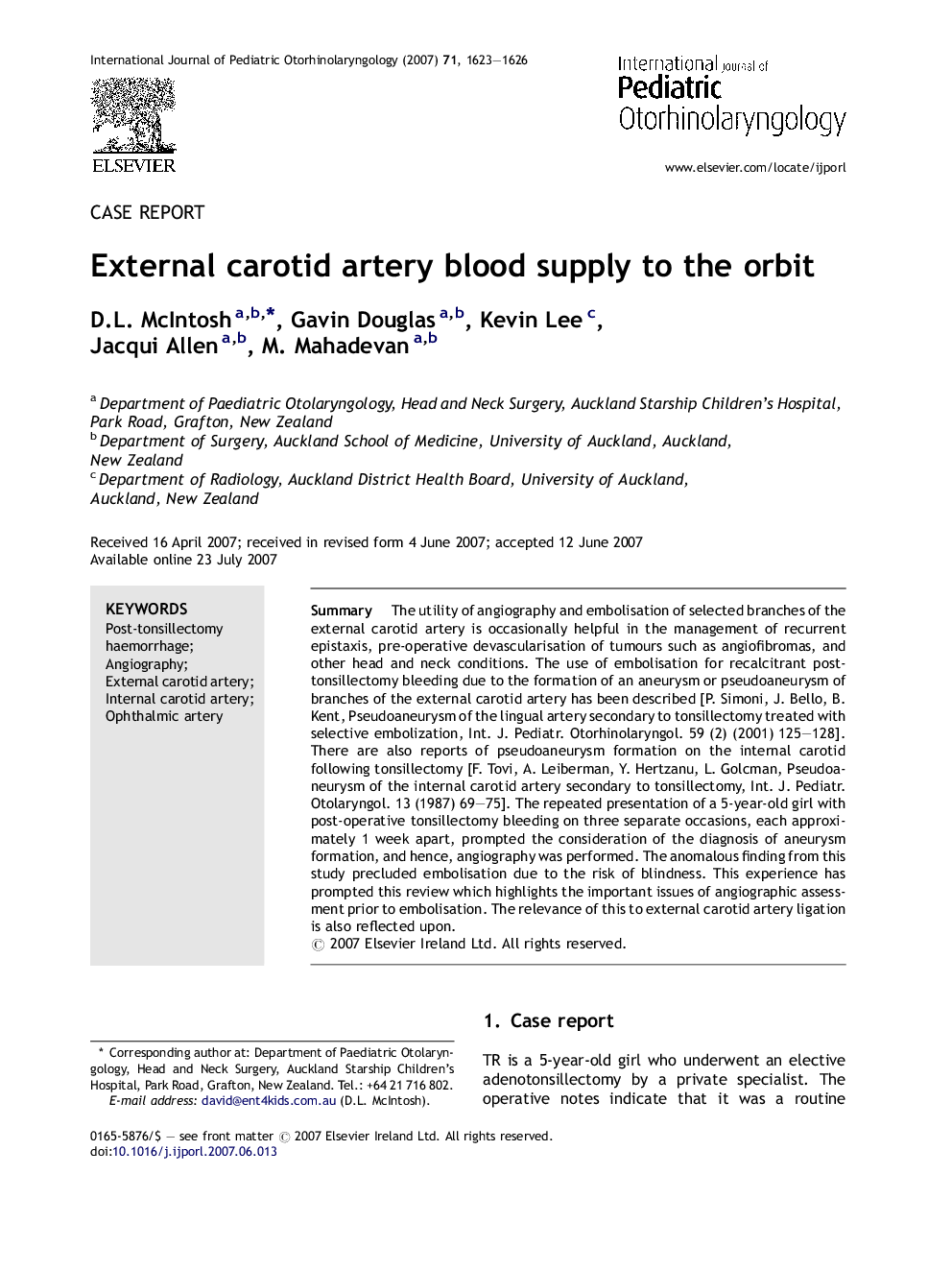| Article ID | Journal | Published Year | Pages | File Type |
|---|---|---|---|---|
| 4113519 | International Journal of Pediatric Otorhinolaryngology | 2007 | 4 Pages |
SummaryThe utility of angiography and embolisation of selected branches of the external carotid artery is occasionally helpful in the management of recurrent epistaxis, pre-operative devascularisation of tumours such as angiofibromas, and other head and neck conditions. The use of embolisation for recalcitrant post-tonsillectomy bleeding due to the formation of an aneurysm or pseudoaneurysm of branches of the external carotid artery has been described [P. Simoni, J. Bello, B. Kent, Pseudoaneurysm of the lingual artery secondary to tonsillectomy treated with selective embolization, Int. J. Pediatr. Otorhinolaryngol. 59 (2) (2001) 125–128]. There are also reports of pseudoaneurysm formation on the internal carotid following tonsillectomy [F. Tovi, A. Leiberman, Y. Hertzanu, L. Golcman, Pseudoaneurysm of the internal carotid artery secondary to tonsillectomy, Int. J. Pediatr. Otolaryngol. 13 (1987) 69–75]. The repeated presentation of a 5-year-old girl with post-operative tonsillectomy bleeding on three separate occasions, each approximately 1 week apart, prompted the consideration of the diagnosis of aneurysm formation, and hence, angiography was performed. The anomalous finding from this study precluded embolisation due to the risk of blindness. This experience has prompted this review which highlights the important issues of angiographic assessment prior to embolisation. The relevance of this to external carotid artery ligation is also reflected upon.
